HRV system benefits include improved indoor air quality, energy savings through heat recovery, humidity control, and protection against mold - all while providing continuous fresh air without wasting energy. Here's what you need to know:
Primary HRV System Benefits:
Today's homes are built tighter than ever before. While this helps with energy efficiency, it creates a new problem: indoor air becomes 2 to 5 times more polluted than outdoor air. Without proper ventilation, your family breathes the same stale air filled with cooking odors, cleaning chemicals, pet dander, and moisture from daily activities.
Simply opening windows isn't the answer - you'll lose all that expensive heated or cooled air. That's where Heat Recovery Ventilators (HRVs) shine. They solve the fresh air problem while keeping your energy bills low.
Modern families spend 90% of their time indoors, making indoor air quality more important than ever. An HRV system provides the controlled ventilation your airtight home needs, ensuring your family breathes clean, fresh air without sacrificing comfort or efficiency.

A Heat Recovery Ventilator (HRV) is a balanced ventilation system that provides fresh air without wasting energy by capturing heat from stale indoor air before it's exhausted.
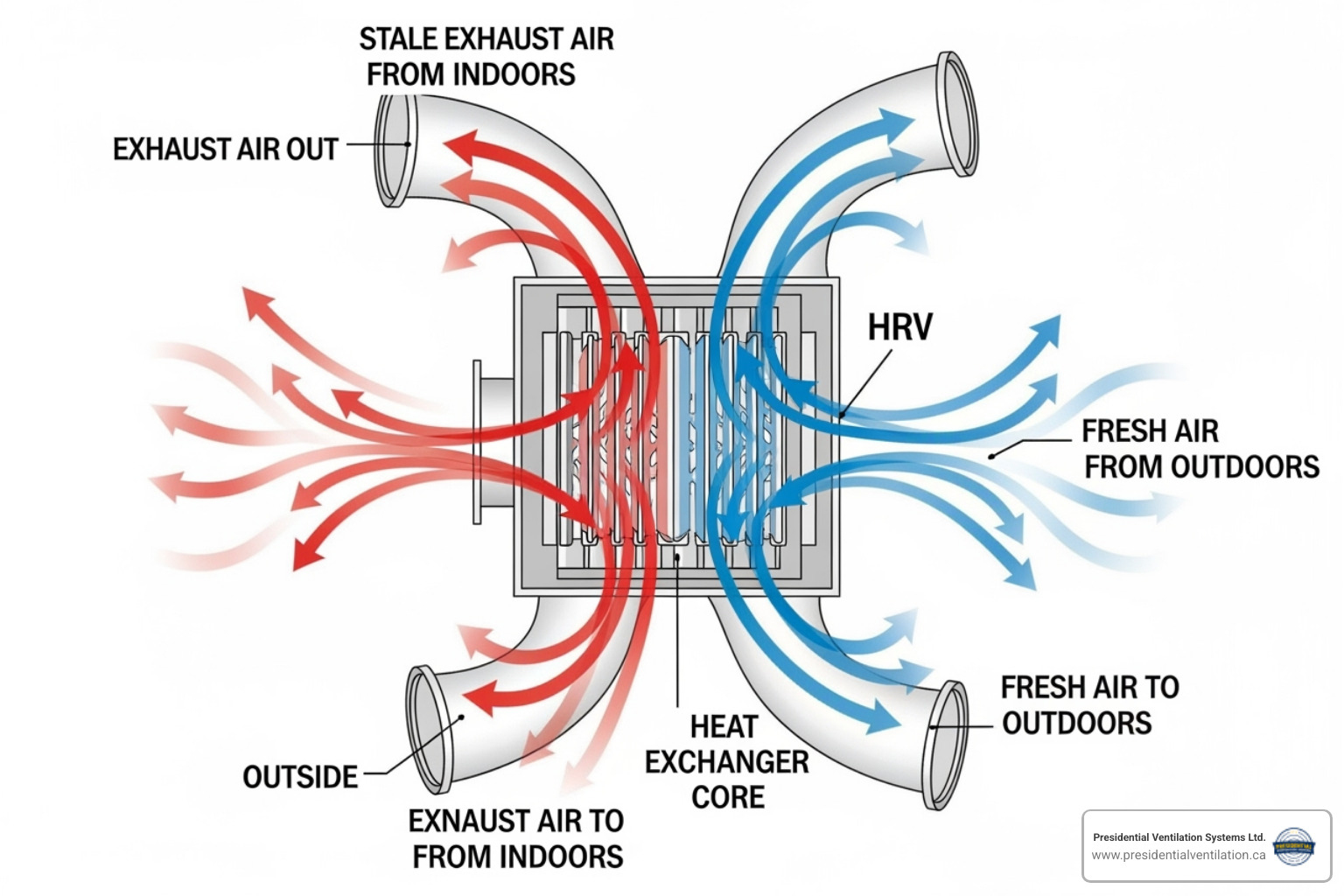
An HRV uses two separate air streams that never mix. The stale air exhaust stream removes humid, polluted air from areas like bathrooms and kitchens, while the fresh air supply stream brings in clean outdoor air.
Both streams pass through a heat exchanger core. In winter, this core transfers heat from the warm stale air to the cold fresh air, providing pre-heating. In summer, the process is reversed for pre-cooling, as cooler indoor air helps condition the warmer outdoor air.
Modern HRV systems integrate with existing ductwork for continuous air exchange, keeping your home comfortable year-round. At Presidential Ventilation Systems Ltd., we've seen the HRV system benefits for over 30 years: fresher air, better comfort, and lower energy bills. More info about our Services.
Modern homes are built to be airtight for energy efficiency. While this lowers heating and cooling bills, it eliminates natural ventilation, trapping pollutants inside. Without proper ventilation, indoor air can become 2 to 5 times more polluted than outdoor air, according to the EPA.
This pollutant buildup includes cooking odors, cleaning chemicals, pet dander, and moisture. An HRV system solves this by providing continuous air exchange. It actively removes stale, polluted air and brings in fresh, filtered outdoor air, preventing harmful buildup while maintaining energy efficiency.
In Nova Scotia's climate, opening windows means losing expensive heated air. An HRV allows your home to "breathe" without this energy waste, resulting in a home that's both efficient and healthy. Importance of indoor air quality.
The real-world impact of an HRV system is a home that feels genuinely fresh and clean. It's about creating a healthier living environment where your family can thrive.
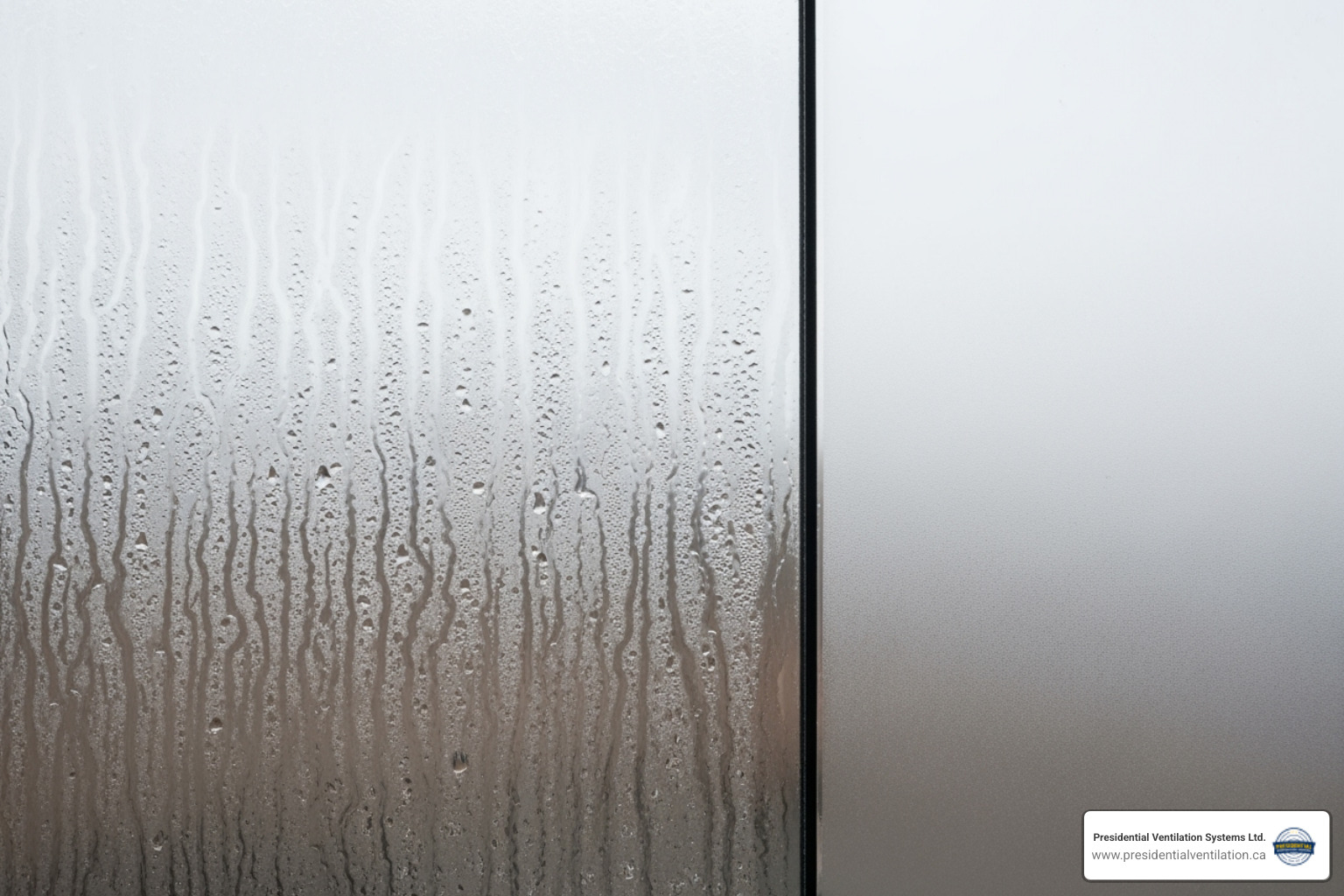
With improved indoor air quality, your home becomes a refuge from outdoor pollutants, not a trap for indoor ones. Your home itself benefits from improved comfort and protection against moisture damage, like condensation on windows.
The most immediate HRV system benefits are for your family's health and comfort:
Scientific studies confirm that proper ventilation leads to significant reductions in harmful particles and improved indoor air quality. Scientific proof of moisture reduction demonstrates these measurable improvements.
In Nova Scotia, managing moisture is a year-round challenge. Cold winters cause condensation, and humid summers make indoor air sticky. A key HRV system benefit is effective humidity management.
Daily activities like showering and cooking add moisture to your indoor air. In an airtight home, this moisture gets trapped, leading to problems. An HRV provides crucial moisture management by exhausting excess humidity.
Proper moisture control provides peace of mind, knowing you're protected from the costly repairs and health issues associated with mold and humidity. Information on humidity and mold explains why prevention is critical.
A compelling HRV system benefit is significant energy savings. Unlike opening a window, which wastes heated or cooled air, an HRV provides energy conservation by capturing energy from outgoing air to treat incoming fresh air. This means lower utility bills year-round.

The financial benefits stem from the heat recovery process:
This process leads to reduced HVAC strain, which saves energy and can extend the life of your equipment. When choosing an HRV, look for ENERGY STAR standards and a high Sensible Heat Recovery Efficiency (SRE) rating for maximum savings. We recommend ENERGY STAR certified models for the best performance. Find ENERGY STAR certified models.
While opening a window seems like a simple fix for a stuffy house, it's inefficient and has several drawbacks compared to an HRV.
An HRV provides all the benefits of fresh air without the energy penalty, security risks, or allergens associated with open windows.
When choosing a ventilation system, you'll encounter HRVs and ERVs. Both provide fresh air and energy recovery, but they differ in moisture management—a key factor for comfort in Nova Scotia.
An HRV is a heat exchanger, while an ERV is a heat and humidity exchanger. The right choice depends on your climate needs.
FeatureHRV (Heat Recovery Ventilator)ERV (Energy Recovery Ventilator)Heat TransferYes (Sensible Heat)Yes (Sensible Heat)Moisture TransferNo (Minimal)Yes (Latent Heat/Moisture)Best ClimateColder, drier climatesHumid climates (hot or cold)Primary FunctionHeat recovery, fresh airHeat & moisture recovery, fresh air
Both HRVs and ERVs excel at sensible heat transfer (temperature), which delivers the core energy-saving HRV system benefits. However, ERVs also manage latent heat transfer (moisture).
This ability to manage moisture makes ERVs valuable in climates with varying humidity. ERV moisture transfer explained.
For Nova Scotia's climate, with its cold winters and humid summers, the choice between an HRV and ERV is important.
For most well-sealed Nova Scotia homes, an ERV is often the best choice due to its superior year-round moisture management. However, an HRV is still an excellent option, especially if summer humidity is less of a concern for you or if you're looking for a lower initial investment.
Your home's airtightness and lifestyle factors (e.g., number of showers, indoor cooking) also influence the decision. Tighter homes and lifestyles that produce more moisture benefit more from an ERV.
The best way to decide is with expert advice. We can help you choose the right system for your home's specific needs. Get a professional consultation.
Here are the questions we hear most often, along with honest answers from our three decades of experience.
Maintaining your HRV system is simple and ensures you continue to receive all the HRV system benefits. Basic upkeep includes:
Regular maintenance keeps your system running efficiently for years. We offer maintenance plans to simplify this process. Our Maintenance Plan.
A quality, well-maintained HRV system can last 15 to 20 years or more, delivering long-term HRV system benefits. The key factors for longevity are proper installation and regular maintenance.
Warranty coverage from quality brands like Daikin typically includes 5 to 10 years on parts, with some components like the heat exchange core often having longer warranties.
Professional installation is crucial. It ensures efficient operation, a longer lifespan, and keeps your warranty valid. Always register your new system after installation to activate your warranty. Register Your Product.
HRVs integrate seamlessly with most existing HVAC systems, making them a versatile upgrade.
After exploring all the ways HRV system benefits can transform your living space, you're probably wondering if this investment is right for your Nova Scotia home. We understand that feeling – it's a big decision, but one that pays dividends in comfort, health, and savings for years to come.
Think about walking into your home after a long day and breathing in fresh, clean air instead of that stuffy feeling you've grown accustomed to. Picture opening your utility bill and seeing those lower heating costs, knowing your HRV is quietly working behind the scenes to recover precious heat that would otherwise be lost. Imagine never worrying about condensation on your windows or that musty smell in the basement because your home's humidity is perfectly balanced.
These aren't just dreams – they're the everyday reality for families who've invested in proper ventilation systems. Improved indoor air quality means fewer allergy flare-ups and respiratory issues. Superior humidity control protects your home's structure while preventing mold growth. Significant energy savings put money back in your pocket month after month, while improved comfort makes your home the sanctuary it should be.
For Nova Scotia homeowners, especially those in newer, well-sealed homes, an HRV system isn't just a luxury – it's becoming a necessity. Our climate demands smart solutions that work through cold winters and humid summers. Whether you live in Halifax, Dartmouth, Kentville, or anywhere across our beautiful province, your home deserves the fresh air and energy efficiency these systems provide.
The investment you make today in your family's health and your home's efficiency will increase your property value tomorrow. Future homeowners increasingly look for homes with quality ventilation systems, recognizing the HRV system benefits we've discussed.
At Presidential Ventilation Systems Ltd., we've spent over 30 years helping families breathe easier and save smarter. As a leading Daikin Comfort Pro Dealer, we bring you exceptional service, long warranties, and energy-saving solutions custom specifically to your home's needs. We're not just installing equipment – we're creating healthier, more comfortable homes across Nova Scotia.
Ready to find what fresh, clean air and lower energy bills feel like? Your family deserves to breathe the difference. Learn more about our HRV Systems.


Heat recovery ventilator installation in bedford ns solves a common problem in modern, energy-efficient homes: trapped indoor air. As homes become more airtight, pollutants like dust, allergens, and volatile organic compounds (VOCs) get trapped inside along with stale air and excess humidity. This can lead to window condensation, odours, and mould growth. An HRV system fixes this by continuously exchanging stale indoor air with fresh outdoor air, recovering up to 90% of the heat that would otherwise be lost. This keeps your home comfortable and your heating bills lower.
Quick Answer: What You Need to Know About HRV Installation in Bedford
For more on the broader benefits of ventilation systems, see our guide to HRV System Benefits. Ready to improve your home's air quality? Contact Presidential Ventilation Systems Ltd. for a consultation.
In Nova Scotia's cold climate, the "build tight – ventilate right" motto is key. Modern homes need mechanical ventilation to maintain a healthy indoor environment. An HRV provides continuous, balanced airflow while recovering heat from the exhaust air to pre-warm incoming fresh air, reducing the energy needed to heat your home significantly compared to systems without heat recovery.

Bedford's climate and modern, airtight homes create a challenge: the construction that saves energy also traps stale air, moisture, and pollutants. This makes heat recovery ventilator installation in Bedford NS an essential upgrade for healthy, comfortable living.
Breathing Cleaner Air, Every Day
An HRV system works continuously to improve your air by exchanging stale indoor air with fresh outdoor air. This process removes everyday pollutants like dust, pet dander, volatile organic compounds (VOCs) from cleaning products, and allergens. For families dealing with allergies or asthma, this continuous air exchange can make a noticeable difference by creating a cleaner home environment.
Winning the Battle Against Humidity
Condensation on windows is a clear sign of excess humidity, a common issue in Nova Scotia's climate. Too much moisture leads to musty smells and mould growth, which can damage your home and affect your health. An HRV actively controls humidity by exhausting moisture-laden air while bringing in drier, fresh air. This helps prevent mould in bathrooms, basements, and around window frames while maintaining a balanced humidity level during dry winter months.
Energy Efficiency That Actually Saves Money
HRVs offer significant energy savings for Nova Scotia homeowners. The system recovers heat from outgoing stale air and uses it to warm incoming fresh air, so your heating system works less. Homes with gas furnaces can see energy savings between 21% and 37% compared to using intermittent exhaust fans, and savings can be even higher for homes with electric baseboard heat. This can translate to hundreds of dollars in annual savings. For more details, see our guide on HRV System Benefits.
Signs Your Bedford Home Needs an HRV
Your home will show signs that it could benefit from an HRV. Look for persistent window condensation, lingering odours from cooking or pets, and mould spots in bathrooms or basements. If family members experience unexplained allergies or respiratory issues that worsen indoors, poor air quality may be the cause.
Making It More Affordable
Financial incentives can make an HRV installation more accessible. Programs like the Canada Greener Homes Grant help homeowners reduce emissions and increase energy efficiency. Many upgrades, including ventilation systems, may qualify for assistance. We encourage you to explore the details through Efficiency Nova Scotia to see what incentives are available for your heat recovery ventilator installation in Bedford NS.
At Presidential Ventilation Systems Ltd., we've spent over 30 years helping Nova Scotians breathe easier and save energy with solutions that improve both comfort and your bottom line.
A professional heat recovery ventilator installation in bedford ns is key to changing your home's air quality. Our process, refined over three decades, ensures your system performs optimally.

System Design and Ductwork Planning
The process begins with a thoughtful design custom to your home. We calculate the precise ventilation rate needed based on square footage and occupancy. A best practice is selecting an HRV with a capacity at least 40% greater than code requires for continuous operation, providing extra power when needed. For a typical three-bedroom Bedford home, this means a capacity of around 60 L/s (127 cfm).
Ductwork layout is engineered for efficiency, using short, straight runs to minimize resistance and noise. For helpful guidance on HRV design principles, this comprehensive guide offers excellent technical insights.
Professional Installation Steps
Key Installation Considerations
Every installation is unique. In new construction, we integrate ductwork seamlessly before walls are finished. For existing homes, we creatively route ductwork to minimize disruption, a crucial upgrade for older homes that have been made more airtight. We also help you choose between a standalone system with its own ductwork or one integrated with your forced-air furnace. Finally, we ensure the unit is accessible for maintenance, with proper clearance for filter changes and core cleaning, ensuring long-term performance.
A common question is whether to choose a Heat Recovery Ventilator (HRV) or an Energy Recovery Ventilator (ERV). Both improve air quality and save energy, but they handle moisture differently—a key factor in Nova Scotia's climate.
Heat Recovery Ventilators (HRVs) are most common in Bedford. An HRV transfers sensible heat (warmth) from the outgoing stale air to the incoming fresh air. This is highly efficient in our cold winters. Critically, HRVs also remove excess humidity generated by cooking and showering, making them ideal for preventing window condensation and moisture issues. They were developed in Canada specifically for cold climates like ours.
Energy Recovery Ventilators (ERVs) transfer both heat and moisture (latent heat). In winter, an ERV retains some indoor humidity, preventing the air from becoming too dry. In summer, it helps reduce the amount of humidity entering from outside, easing the load on your air conditioner.
For most Bedford homes dealing with excess winter moisture, an HRV is the ideal choice. However, an ERV might be a better fit if your home is very dry in winter or if you use air conditioning and want better humidity control in summer.
Here's a straightforward comparison:
| Feature | Heat Recovery Ventilator (HRV) | Energy Recovery Ventilator (ERV) |
|---|---|---|
| Heat Transfer | Sensible heat only | Sensible and latent heat (moisture) |
| Moisture Transfer | Minimal – removes excess humidity | Significant – balances humidity levels |
| Ideal Climate | Cold climates with excess indoor humidity (Nova Scotia winters) | Climates with very dry winters or very humid summers |
| Best For | Reducing window condensation, controlling moisture, lowering heating costs | Maintaining comfortable humidity year-round, reducing AC load |
The good news is you don't have to figure this out on your own. When you work with us on heat recovery ventilator installation in bedford ns, we'll assess your home's specific conditions to recommend the system that will work best for you. For more on ERVs, explore our guide on Energy Recovery Ventilation in Halifax NS.
Regular maintenance ensures your HRV system performs at its best. While some tasks are simple for homeowners, an annual professional tune-up is essential for longevity and efficiency.

As a homeowner, your main tasks are cleaning or replacing the filters every few months and ensuring exterior vents are clear of snow, leaves, or other blockages. Clean filters and clear vents allow for proper airflow and system efficiency. For more on duct maintenance, see our guide on HRV Duct Cleaning.
An annual service appointment after your heat recovery ventilator installation in bedford ns protects your investment. Our technicians perform several key tasks:
We recommend scheduling your annual service each fall before the heating season. This proactive approach ensures your family continues to breathe the cleanest air possible.
Here are answers to the most common questions we receive about heat recovery ventilator installation in bedford ns:
An HRV continuously supplies fresh, filtered outdoor air while exhausting stale, contaminated indoor air. This process removes pollutants like dust, pet dander, mould spores, and volatile organic compounds (VOCs). It also manages humidity levels, which is crucial for preventing mould growth. The result is healthier indoor air without opening windows and losing heat.
For most homes, a professional installation is completed in one to two days. The exact timeline depends on the home's complexity and whether it's a new build or a retrofit. Our experienced team works efficiently to minimize disruption to your home.
Yes, retrofitting an HRV into an older home is a common and highly effective upgrade. It's especially beneficial for homes that have been made more airtight with new windows or insulation. While integrating ductwork into an existing structure requires careful planning, our team has over three decades of experience finding solutions that work beautifully while preserving your home's character.
A heat recovery ventilator installation in bedford ns is an investment in your family's daily health and comfort. An HRV transforms your home by providing fresh, filtered air, controlling excess humidity, and recovering heat to lower your energy bills. This combination of better air quality, energy savings, and increased comfort creates a superior living environment.
But here's where professional installation becomes absolutely critical. An HRV system is only as good as the expertise behind its installation. Proper sizing, ductwork design, and precise system balancing are the foundation of a system that operates efficiently, quietly, and safely. A poorly installed system can create more problems than it solves.
That's where experience matters. With over 30 years of experience serving Nova Scotia homeowners, Presidential Ventilation Systems Ltd. has the expertise to handle any ventilation challenge. As a leading Daikin Comfort Pro Dealer, we are committed to finding the right solution for your Bedford home, whether it's a new build or a historic property.
Ready to take the next step toward healthier, more comfortable indoor air? Explore our professional HRV Systems services and let's start a conversation about what an HRV system can do for you. Your home should be your sanctuary—a place where your family thrives. Let's make that happen together.


A heat pumps tune-up in mount uniacke ns is essential for maintaining year-round comfort and controlling energy costs. Your system works hard through Mount Uniacke's humid summers and cold winters, making regular maintenance critical for reliable performance. Without it, you risk higher bills, unexpected breakdowns, and a shorter system lifespan. A professional tune-up from Presidential Ventilation Systems Ltd. ensures your heat pump runs efficiently, catching small issues before they become expensive repairs. Our Red Seal certified technicians bring over 30 years of local expertise to every service call.
Here's what you need to know about professional tune-ups:
Learn more about our heat pump services in Mount Uniacke, or schedule your professional tune-up today.

Your heat pump is a hardworking system that needs regular attention to perform its best, much like a car needs routine oil changes. Regular maintenance isn't just about preventing breakdowns; it's about maximizing efficiency, extending its lifespan, and saving you money. A professional heat pumps tune-up in Mount Uniacke NS can lead to up to 25% savings on energy costs, help your system last 15-20 years, and provide cleaner indoor air.
Without consistent care, minor issues like a dirty coil or a loose connection can force your system to work harder, consume more energy, and eventually lead to a costly failure—usually at the worst possible time. The good news is that most of these problems are preventable with an annual tune-up. For more on the basics, see this Heat Pump Introduction and Maintenance guide from Efficiency Nova Scotia and our article on Regular Maintenance Heat Pump Efficiency.
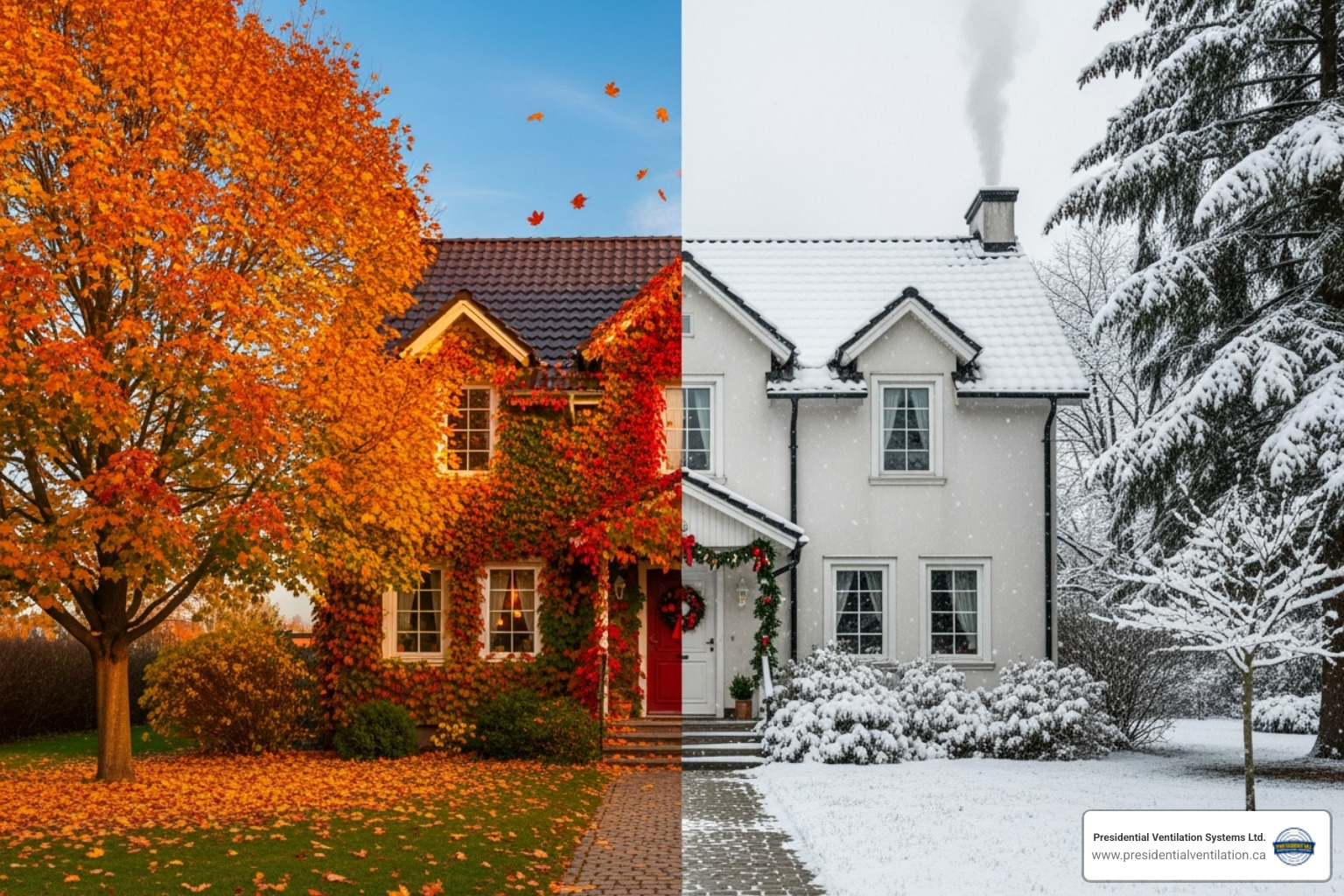
Mount Uniacke's four distinct seasons put your heat pump to the test. Humid summers require efficient cooling, while cold winters demand constant heating. The winter is especially tough on the outdoor unit, which uses extra energy during its defrost cycle to combat ice buildup. Even the salt in the air can accelerate corrosion on metal components if they aren't cleaned regularly.
A professional tune-up prepares your system for these challenges. By cleaning away grime, checking for corrosion, and ensuring all components are in top shape, we help your heat pump operate efficiently through any temperature swing. This not only ensures consistent comfort but also prevents the wear and tear that shortens your system's life. A clean, well-adjusted heat pump uses less electricity, potentially saving you hundreds of dollars annually. It's the difference between a small maintenance cost and a major replacement expense. Learn more in our articles on Seasonal Considerations Heat Pump Maintenance and how Heat Pumps Improve Home Energy Efficiency.
When you schedule a professional heat pumps tune-up in Mount Uniacke NS with us, you're investing in a thorough service designed to optimize performance, improve safety, and extend its lifespan. Our Red Seal certified technicians follow a detailed checklist, using specialized diagnostic tools to identify potential issues before they become major problems. This meticulous approach ensures your system runs smoothly and efficiently, giving you peace of mind. For more information, visit our Heat Pump Services Mount Uniacke NS page.
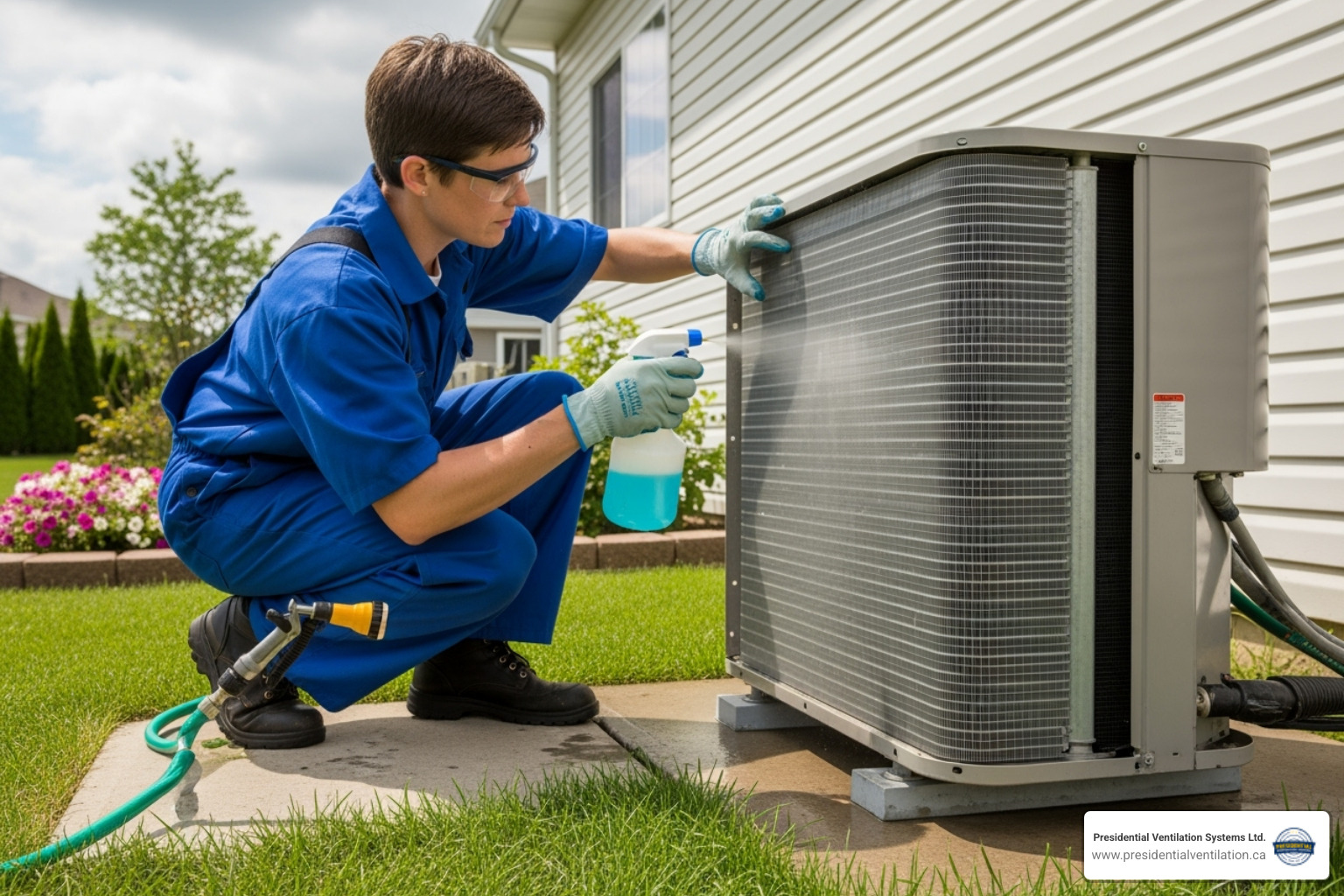
Our comprehensive service covers every critical component of your system to ensure it runs at peak performance. A technician will:
This detailed process is why professional service is so important. Learn more in our article on Essential Heat Pump Check-Ups.
Your heat pump often communicates when it needs attention through clear warning signs. Ignoring them can lead to a complete breakdown, often during extreme weather. Noticing rising energy bills or a decline in comfort are clear indicators that it's time for a heat pumps tune-up in Mount Uniacke NS. Fortunately, most of these issues are preventable with regular maintenance. For a deeper look, see our guide to Common Heat Pump Issues.
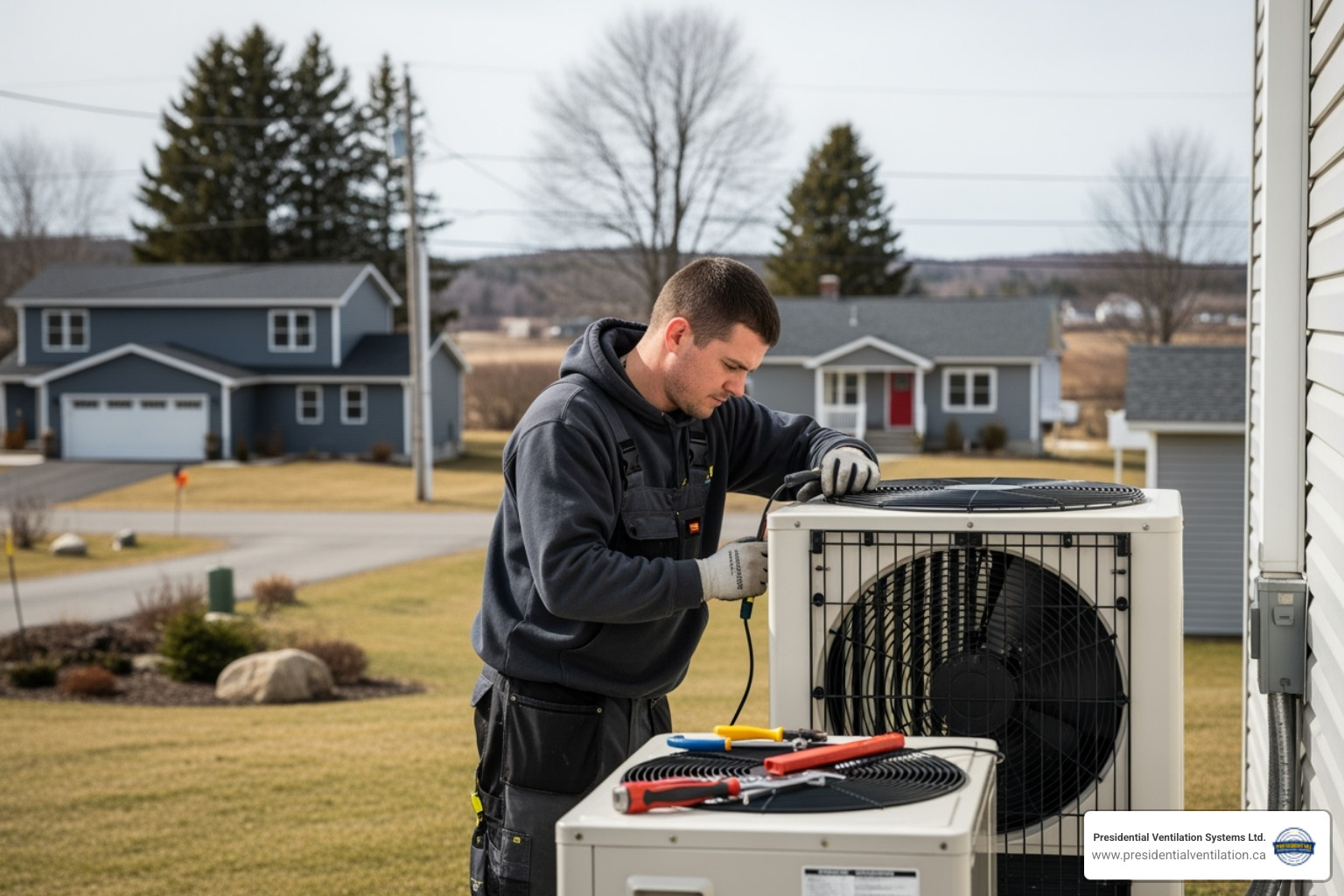
If you notice any of the following performance issues or warning signs, it's time to schedule a professional inspection.
Catching these issues early can prevent a complete system failure. Our team specializes in Heat Pump Repair Mount Uniacke NS and can quickly diagnose the problem. Learn more about Identifying Early Signs Heat Pump Failure.
While some basic upkeep is great for your heat pump, a comprehensive heat pumps tune-up in Mount Uniacke NS requires professional expertise. Heat pumps are sophisticated systems with high-voltage components and refrigerants that require licensed handling. Attempting advanced repairs can be dangerous, void your warranty, and lead to costlier problems. As recommended by organizations like EfficiencyOne, professional servicing is key to maximizing efficiency and longevity.

Between professional visits, you can help your system run efficiently with these simple tasks:
A professional tune-up addresses technical aspects that are unsafe for DIY maintenance.
Professional service catches small problems before they become costly emergencies, protecting your investment. Learn why you should Choose Our Technicians Heat Pump Needs.
We've answered some of the most common questions Mount Uniacke homeowners have about heat pump maintenance.
We recommend a professional tune-up at least once a year. For optimal performance in Nova Scotia's climate, twice-a-year service (once in spring for cooling, once in fall for heating) is ideal. This proactive approach prepares your system for peak seasons and is often required by manufacturers to keep your warranty valid. Our Annual Heat Pump Tune-Up post has more details.
A heat pumps tune-up in Mount Uniacke NS directly improves efficiency and lowers your utility bills by:
These adjustments prevent your system from working harder than necessary, significantly reducing energy consumption. A well-maintained unit is a key part of an Energy Efficient HVAC System.
Yes. A tune-up is preventative maintenance. Our technicians perform early issue detection, catching small problems like worn belts or minor leaks before they cause a major breakdown. By addressing wear and tear and keeping components in good condition, we extend the life of your system and help you avoid expensive emergency repairs. This provides peace of mind, knowing your system is reliable. Read more on Why Heat Pump Maintenance is Essential.
Investing in a professional heat pumps tune-up in Mount Uniacke NS is the best way to ensure your home remains a comfortable, efficient haven all year long. Regular maintenance guarantees reliable operation, improves indoor air quality, and extends the life of your system, giving you peace of mind through every Nova Scotia season.
For over 30 years, Presidential Ventilation Systems Ltd. has been the trusted partner for homeowners in Mount Uniacke. Our Red Seal certified technicians provide expert, honest service to keep your family comfortable.
Don't wait for a breakdown. Proactive care is always more affordable than emergency repairs. If it's been a while since your last service, or if you've noticed any warning signs, now is the time to act.
Ready to give your heat pump the professional attention it deserves? Contact us today to schedule your comprehensive tune-up and ensure your system is ready for the seasons ahead. Explore our full range of Heat Pumps Mount Uniacke NS services to see why local homeowners trust us with their home comfort.
